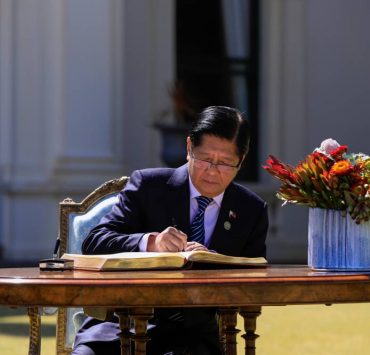Tesda’s impossible mission

Government tried to fix the job-skills mismatch, declared a priority concern last week by President Marcos, in 1994. In the most comprehensive reform of the educational system since independence, it reduced the scope of the Department of Education, Culture, and Sports (DECS) to basic education (DepEd) and promoted subordinate offices into the autonomous agencies of the Technical Education and Skills Development Authority (Tesda) and the Commission on Higher Education (CHEd).
This “trifocalized” structure sought to give greater importance to post-secondary school issues, often considered lower priority to the longer cycle and larger market of basic education. Freed from DECS supervision, CHEd and Tesda could presumably pursue their distinct mandates more vigorously, meet new challenges more quickly and set clearer performance measures. Autonomy was an alternative to coordination mechanisms.
Government later worried that trifocalization had weakened sectoral synergy, leading it in 2000 to form the National Coordinating Council for Education (NCEE), whose chairmanship rotated among the three agencies. When “system integration and program unity” still seemed inadequate, the rotating chairmanship was blamed—for ignoring the “hierarchical nature of Philippine government entities.” An Asian Development Bank review in 2021 noted the perspective of the first chair discounting the need to organize a separate NCEE secretariat.
A permanent chair might have improved sectoral coordination. More important, however, was each agency’s ability to do its job. CHEd and Tesda, still mapping the fast-changing landscape in which they had to operate, did not need a more collaborative as a more effective DepEd that could send them K-10 cohorts better equipped to move beyond basic education.
Colleges under CHEd could cope with unprepared DepEd K-10 graduates by introducing remedial courses, costing parents additional time and expense. Lacking this option, Tesda needed the support of business and industry to understand the competencies needed in the work force and to develop relevant curricular courses, apprenticeship on-the-job-training, and the processes to certify the skills acquired by the students. Under the K-10 cycle prevailing at its creation, Tesda’s mandate to fix job-skills mismatch was an impossible mission.
High school was the logical stage for Tesda’s promotion of technical-vocational education and training (TVET). But the congested K-10 curriculum had no room for meaningful TVET programs. It was, moreover, DepEd’s territory. With thousands of unemployed college graduates, companies had no incentive to support or hire underage, unqualified K-10 completers, roughly 40 percent of which would drop out of formal education with little ability to continue lifelong learning on their own.
Employer skepticism reinforced the preference of basic education graduates for a college diploma than a voctech certificate. K-12 could have launched a credible voctech track but the flawed implementation wasted this chance to counter the bias against TVET. DepEd could offer TVET courses but, lacking equipment, faculty, and linkages with business and industry, it could run only lower skill programs for low-paying jobs unattractive to senior high school students.
Tesda did try to promote enterprise-based training (EBT). In 2016, EBT accounted for 3 percent of total enrollment. By 2022, it had reached 9 percent against the targeted 40 percent. Most of Tesda’s program did not lead to certification useful for the formal job market. The First Congressional Commission on Education (EdCom I) believed that workforce development demanded genuine partnership with business and industry. EdCom II documents show this advice went unheeded and detail the misalignments that derailed Tesda’s progress.
Instead of assured, meaningful incentives, employers encountered ponderous EBT processes for registration, approval, and certification that involved voluminous paperwork, perplexing policies, such as requirements for equipment no longer in use, and timelines extending up to three years or the payment of taxes for fully depreciated equipment donated to schools on the basis of their original cost. Tesda did not help itself, leaving DECS but not entirely losing the bureaucratic, one-size-fits-all habits bred into it. One regional office wanted changes in training materials already integrated into the company’s digital, global learning resources.
The job-skills mismatch was never a task for Tesda or any one agency or sector alone to fix. While interagency coordination was important, its effectiveness depended on assumptions that: 1) expectations from agencies were reasonable; 2) subject to effective supervision by higher authorities, they earned commensurate rewards or sanctions; 3) agencies received adequate resources, including capable leadership and the support of other sectors.
Agency leaders remain liable for incompetence or neglect of duty. But they cannot create, though they can and must question, the conditions affecting their performance. The President has stressed the importance of matching skills to jobs. But who will assume accountability for explaining and implementing the plans to achieve this 30-year-old, intrasectoral goal?
Edilberto C. de Jesus is professor emeritus at the Asian Institute of Management.
Business Matters is a project of the Makati Business Club (makatibusinessclub@mbc.com.ph).





















